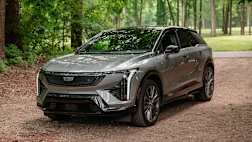How long does a Tesla battery last? According to official Tesla-sourced data, Tesla batteries lose between 12 and 15 per cent of their capacity, on average, after approximately 321,868km (200,000 miles in American speak) of usage.
If this data is correct, the average Australian driver won’t need to consider replacing their Tesla battery until 26 years into ownership, because the national average driver travels a touch over 12,000km a year.
I’m going to go out on a limb and suggest people who buy Teslas, or electric vehicles in general, travel fewer kilometres than the average driver.
Tesla battery lifespan is the kind of thing EV shoppers consider carefully, because they’ve all owned Apple iPhones, or Microsoft laptops, and noticed that battery life seems definitively finite. It’s important to realise, of course, that the batteries in an EV are vastly bigger.
Elon Musk is aware, of course, that Tesla battery life is something buyers worry about, and it provides an eight-year/192,000km warranty with the purchase of all Australian-delivered vehicles, except the rear-wheel-drive Model 3 and Model Y vehicles, which come with a similar eight-year/160,000km warranty.
The terms of these warranties are as follows; if the Tesla battery drops below 70 per cent capacity in less than the aforementioned time period or distance, Tesla covers the cost of a replacement battery.
Replacement batteries for a Tesla can cost anywhere from $15,000 up to $20,000 across all models.
A study in April 2024 by British motoring insurance company NimbleFins - which examined nine years of Tesla battery lifetime data - found the batteries should deteriorate by around one per cent of their range per year.
In terms of how you can look after your battery, there are multiple factors that affect Tesla battery lifespan.
For any electric vehicle, you want to avoid fully charging the battery to 100 pre cent regularly, to preserve maximum battery capacity.
.jpg)
Canadian lithium-ion battery researcher Jeff Dahn claims that, treated properly and kept in the right “voltage window”, a Tesla battery can stay fully operational for 100 years, or 1.6 million kilometres.
Dr Adam Best (just call him Dr Best), Principal Battery Researcher at our own CSIRO, claims that, if owners employ the appropriate maintenance techniques to prolong battery health, Tesla batteries can achieve a “pretty impressive life cycle”.
But what are these maintenance techniques? Dr Best suggests you try to keep the charge level always between 20 per cent and 80 per cent, as opposed to running the battery from zero to 100 and back again, which will “help to extend the life of your EV”, regardless of battery chemistry and composition.
Teslas predominantly run on lithium iron phosphate (LFP) or nickel cobalt aluminium (NCA) chemically composed batteries, while other brands like Polestar use nickel manganese cobalt (NMC).
Both NCA and NMC batteries thrive in conditions where they aren’t being charged to maximum capacity and drained to empty.
.jpg)
So if you are a responsible and battery-conscious EV driver, who can you know if your EV is responding well to your gentle treatment? What are the signs that your battery is dying, or that it’s functioning properly?
Other than the most obvious indicator of declining battery capacity - getting less mileage out of each charge - other signs that your EV’s battery might be suffering are slower charging times, a change in the driving sensation (sluggishness, lack of responsiveness), strange smells or noises while charging or driving, and, of course, the Tesla multimedia system telling you that your battery may be in decline.
In terms of real-world results, it’s also worth pointing to a test conducted by a Tesla Model S 70D owner, Branden Flasch. Branden's vehicle had reportedly travelled 234,964km when he put his Tesla battery to the test, and the results were very impressive.
The Model S in question was purchased in 2015, and its owner charged it to 99 per cent before the test, and then drove it until the batteries were completely depleted, measuring its kWh usage to check the battery's depletion.
The reported results have the Model S using 58.5kWh, roughly 83 per cent of their original 70kWh capacity.






.jpg)
.jpg)

.jpg)
 copy.jpg)

_1.jpg)

.jpg)



.jpg)



.jpg)


.jpg)
